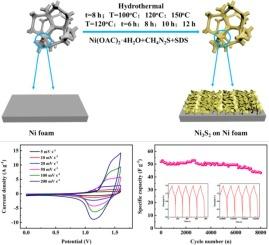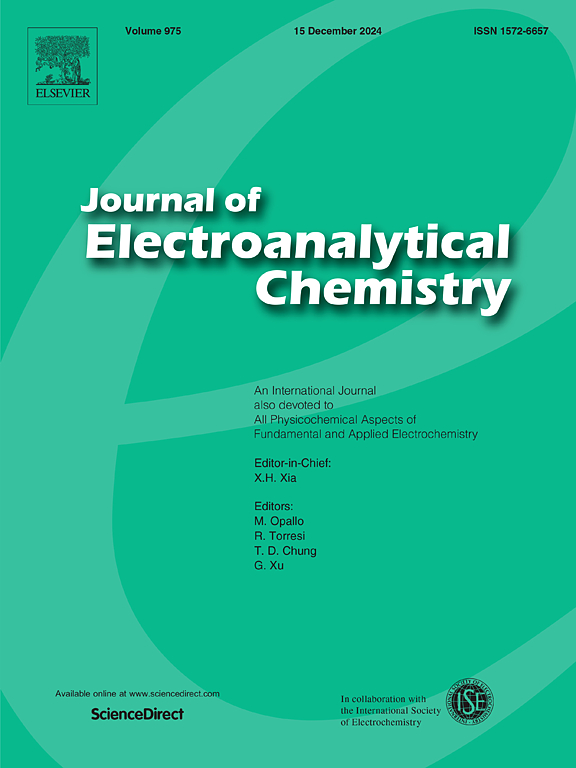Flower-like and porous Ni3S2 nanosheets for high performance supercapacitors
IF 4.1
3区 化学
Q1 CHEMISTRY, ANALYTICAL
引用次数: 0
Abstract
Transition metal sulfides have received significant attention as electrode materials for their low cost and high specific capacitance. Herein, flower-like and porous Ni3S2-120-10 assembled by nanosheets is directly grown on nickel foams through a facile one-step hydrothermal method. Benefited from the porous structure, the flower-like compound offers respectable gravimetric specific capacitance of 1899.4F g−1 at a current density of 1 A/g in 6 M KOH aqueous electrolyte. Moreover, an asymmetric supercapacitor (ASC) was obtained using Ni3S2-120-10 as the positive electrode and active carbon as the negative electrode with 6 M KOH as the electrolyte. Ni3S2-120-10//AC displays a high power density of 1590.7 W kg−1 at the energy density of 17.6 Wh kg−1 accompanied with an outstanding cyclic stability (83.2 % of initial capacitance after 8000 cycles). This work provides a facile strategy for the next generation energy-storage applications with high stability and superior electrochemical capacity.

用于高性能超级电容器的花朵状多孔 Ni3S2 纳米片
过渡金属硫化物因其低成本和高比电容作为电极材料而备受关注。本文通过简单的一步水热法,在镍泡沫上直接生长出了由纳米片组装而成的花状多孔 Ni3S2-120-10。得益于多孔结构,这种花状化合物在 6 M KOH 水电解液中的电流密度为 1 A/g 时可提供 1899.4F g-1 的可观重量比电容。此外,以 Ni3S2-120-10 为正极,活性炭为负极,6 M KOH 为电解质,还获得了一种不对称超级电容器(ASC)。在能量密度为 17.6 Wh kg-1 的情况下,Ni3S2-120-10//AC 显示出 1590.7 W kg-1 的高功率密度和出色的循环稳定性(8000 次循环后初始电容的 83.2%)。这项工作为具有高稳定性和卓越电化学容量的下一代储能应用提供了一种简便的策略。
本文章由计算机程序翻译,如有差异,请以英文原文为准。
求助全文
约1分钟内获得全文
求助全文
来源期刊
CiteScore
7.80
自引率
6.70%
发文量
912
审稿时长
2.4 months
期刊介绍:
The Journal of Electroanalytical Chemistry is the foremost international journal devoted to the interdisciplinary subject of electrochemistry in all its aspects, theoretical as well as applied.
Electrochemistry is a wide ranging area that is in a state of continuous evolution. Rather than compiling a long list of topics covered by the Journal, the editors would like to draw particular attention to the key issues of novelty, topicality and quality. Papers should present new and interesting electrochemical science in a way that is accessible to the reader. The presentation and discussion should be at a level that is consistent with the international status of the Journal. Reports describing the application of well-established techniques to problems that are essentially technical will not be accepted. Similarly, papers that report observations but fail to provide adequate interpretation will be rejected by the Editors. Papers dealing with technical electrochemistry should be submitted to other specialist journals unless the authors can show that their work provides substantially new insights into electrochemical processes.

 求助内容:
求助内容: 应助结果提醒方式:
应助结果提醒方式:


